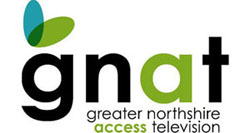Burr and Burton to raise tuition cost by 2.2 percent

MANCHESTER — Burr and Burton Academy has announced it will be raising tuition costs for area school districts considered “sending districts” by 2.2 percent for the coming school year.
The school announced on Monday, Nov. 20, that its board of trustees had voted during a meeting on Nov. 6 to increase tuition to $17,065 for the 2018-19 school year. Currently, tuition for students from Danby, Dorset, Dover, Londonderry, Landgrove, Manchester, Mt. Tabor, Peru, Stratton, Sunderland, Weston and Winhall is $16,700.
For students who attend the grade 9-12 independent school from other towns, the current tuition cost is $17,700, and that will increase to $18,065, which translates into a 2.06 percent increase.
“We are, of course, aware of the pressure on the education fund, and as it turns out, this rate of increase is slightly less than the increase referenced by Governor Scott in his letter of Nov. 14,” the statement announcing the tuition increase stated. “This increase is also less than the increase in teacher salaries for next year.”
The statement added that Burr and Burton works hard to keep tuition increases low, and the average annual increase since 2010 has been 2.75 percent.
“Like any institution we have constantly rising costs, not the least of which are salaries and health care,” said Seth Bongartz, Chair of Burr and Burton’s Board of Trustees. “Recognizing the stress on the State Education Fund, and wanting to do what we can to provide a smooth first year for the Taconic and Green Regional School District, we strove to keep our tuition increase to the true minimum of what we could get by on for at least a year, while maintaining the level of educational opportunity that we provide.”
According to Bongartz, Burr and Burton’s focus on fundraising efforts played a large role in the school’s ability to curb tuition increases.
“One of the reasons we were able to do this is because of our fundraising efforts,” he said. “We have an endowment that helps contribute to our operations, and we have a lot of fundraising for operations every year.”
Though tuition increases do impact other local school boards and their budgets, Bennington Rutland Supervisory Union Superintendent Jackie Wilson says she is appreciative of Burr and Burton’s efforts to lessen that impact.
“I’ve found their 2.2 percent increase to be very responsible and reasonable,” Wilson said. “We’ve had conversations with Burr and Burton prior to them setting that rate, and we’re happy that they opened their doors to us for that conversation in this tough educational and fiscal environment.”
According to Wilson, the Taconic and Green Regional School District is currently working to outline its budget for the 2019 fiscal year.
The letter sent by Gov. Scott to education leaders across the state on Nov. 14 referenced in the announcement restated many of the Governor’s themes that touch on education. While Vermont wants and needs an education system that is competitive with every state, budget pressures and costs to Vermonters through the property tax need to be kept in check as well. Finding the balance point between the two will be a challenge for many school boards, but one he felt they were equal to, he stated in the letter.
But education costs keep rising while fewer and fewer students are attending Vermont schools, an unsustainable trend that has to be reversed, he said.
The 2.2 percent increase announced by Burr and Burton is under the 2.5 percent figure targeted by the Scott administration.
“At the end of the day, I will not support any legislation that authorizes state spending to grow faster than the rate of growth in the economy and wages. We estimate the growth rate calculation – average state economic and wage growth over the past six years – to be 2.5 percent and expect confirmation from the state economist in early December,” Scott said. ” We need to establish the same boundaries for per pupil spending across the state. If we have the courage to innovate and the resolve to follow through, this standard does not have to result in cuts to programming for kids and, in fact, can increase academic opportunities.”







